2013 Arctic Cat F800 and F1100 Sno Pro RR Review – Video
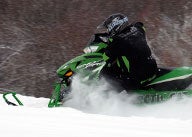
Cat's 2013 Race Replica is a race sled for the masses
Shortly after the Sno Pro 500 was released as a production model in 2010, Arctic Cat loyalists begged for an 800cc version. “That engine won’t fit in the race chassis,” was the response of Arctic Cat engineers.
Engine Type:Horizontal In-line
Cylinders:2
Engine Stroke:2-Stroke
Valve Configuration:Reed Valve
Displacement:794 / 48.4
Starter:Pull
Turbocharged:No
View Full SpecIt’s true. The 2008-2011 Sno Pro 600 and current Sno Pro 500 chassis was designed to hold a smaller engine, but the new ProCross chassis is also the current Sno Pro 600 race chassis and it will accept the 800 HO (as well as the 1100 four-stroke). Not forgetting the call for an 800cc version of its race sled, Cat put together the 2013 F800 Sno Pro RR (as well as the F1100 Turbo Sno Pro RR). The RR stands for Race Replica, but it’s important to remember it is a replica of the cross-country version of the Sno Pro 600, not the snocross version.
Get the Flash Player to see this player. |
So, how close is it to the 600 Sno Pro guys like Ryan Simons, Brian Dick and D.J. Ekre saddle up every weekend? Pretty darn close.
The F800 Sno Pro RR features a rear suspension and Fox shocks identical to the ones that came on the race sled. Up front the Fox FLOAT Evol X shocks are exactly the same as the race sled, too. The shocks come with the calibration Arctic Cat cross-country racer and engineer Brian Dick helped develop with Fox Racing Shox and all four are compression and rebound adjustable reservoir shocks.
Race sleds sometimes provide a glimpse into the future. If you followed Team Arctic and the 2012 Sno Pro 600, you would have glimpsed what was in store for 2013 when it came with the new 2.86-inch pitch track. Arctic Cat engineers found the 2.86-pitch track to be lighter and faster than the old 2.52-pitch. All this means the 1.25-inch Ripsaw track on the RR is the same as the cross-country guys were using and proving all last year. The RR also comes with a smaller bore master cylinder, lighter, drilled rotor and harder compound brake pads like the race sled uses and also has wider tunnel edge rolls and reinforced running boards like the racer.
While the RR is about as close as you can get to a race sled, there are some race-only things that just won’t fly for production use as well as other things that had to be spec’d on the sled as a part of the overall package. With each specific engine package comes a different airbox/hood assembly and, since both the 800 HO and 1100 four-stroke are fuel-injected (the race engine is carbureted), the fuel tank has different fittings, Also, the RR fuel tank is black plastic while the race sled is clear since racers typically go by sight for fuel level. One thing to note about the 800 HO engine is, while you can’t race an 800cc engine in any sort of terrain racing (600cc is the limit), the 800 HO is probably the closest thing to a production two-stroke race engine Arctic Cat or any other manufacturer produces in both sound and feel. You can race the normally aspirated (N/A) 1100 four-stroke though as the rules were changed this year to allow for larger four-stroke engines in cross-country.
| 2013 Arctic Cat Sno Pro RR Specs | |
| Engine | Arctic/Suzuki 1056cc, turbocharged four-stroke, liquid-cooled or 794cc two-stroke twin; electronic fuel injection |
| Horsepower | 177 (1100 Four-stroke turbo); 160 (800cc two-stroke) |
| Drive | Arctic 6 post rpm-sensing drive with 10.75-in Arctic roller cam driven |
| Front Suspension | Arctic Race Suspension (ARS) twin A-arm suspension; Fox Evol X shocks with stabilizer bar; 10-inches of travel |
| Rear Suspension | ProCross Race Slide-Action parallel rail slide with 7-position coupling; Fox Zero X piggyback shocks; up to 13.5-inches of travel at rear wheel |
| Length | 118.0 in |
| Width | 44.0 in |
| Ski Stance | Adjustable from 42-43 in |
| Track | 15 x 128 x 1.25 Ripsaw |
| Brake | Radial master cylinder hydraulic with race disc on driveshaft |
| Weight | NA |
| Fuel Capacity | 10.6 US Gal |
| MSRP | $13,599 (800)/$15,399 (Turbo 1100) |
Related Reading
2012 Arctic Cat ProCross F800 LXR Review
2012 Arctic Cat F1100 Turbo Sno Pro Limited Review – Video
2012 Arctic Cat F1100 Sno Pro Review



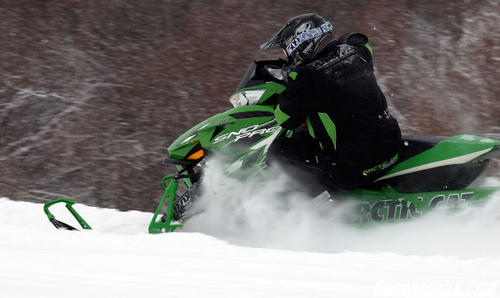
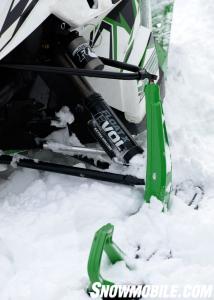
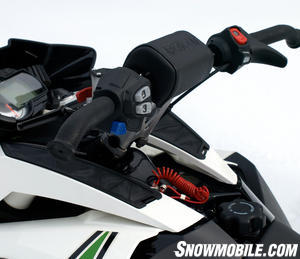
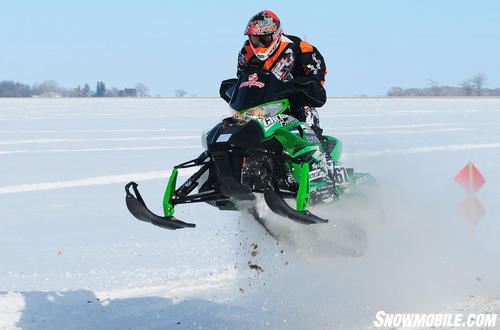
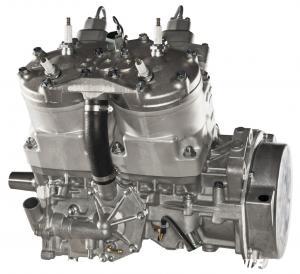
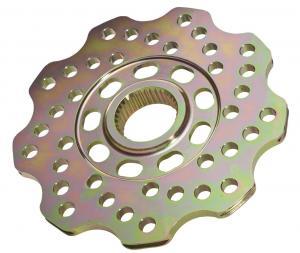
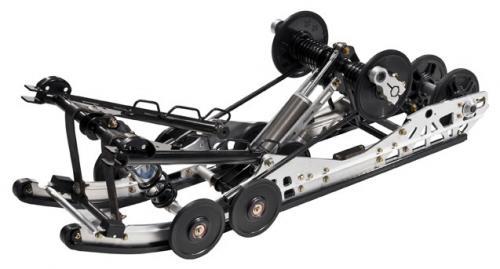

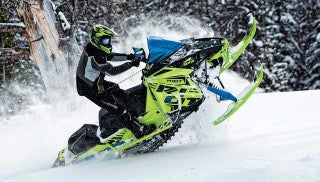



 Your Privacy Choices
Your Privacy Choices